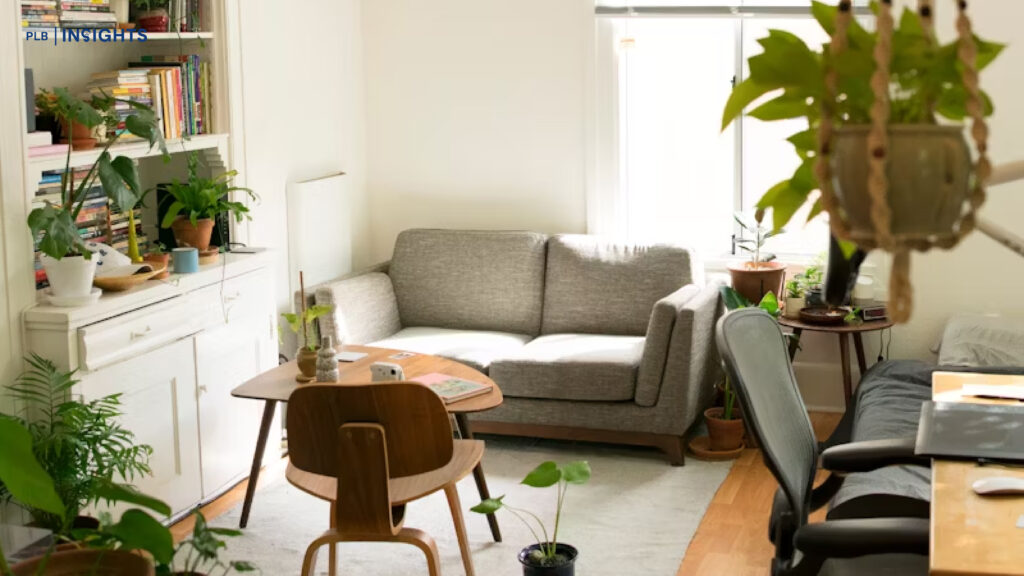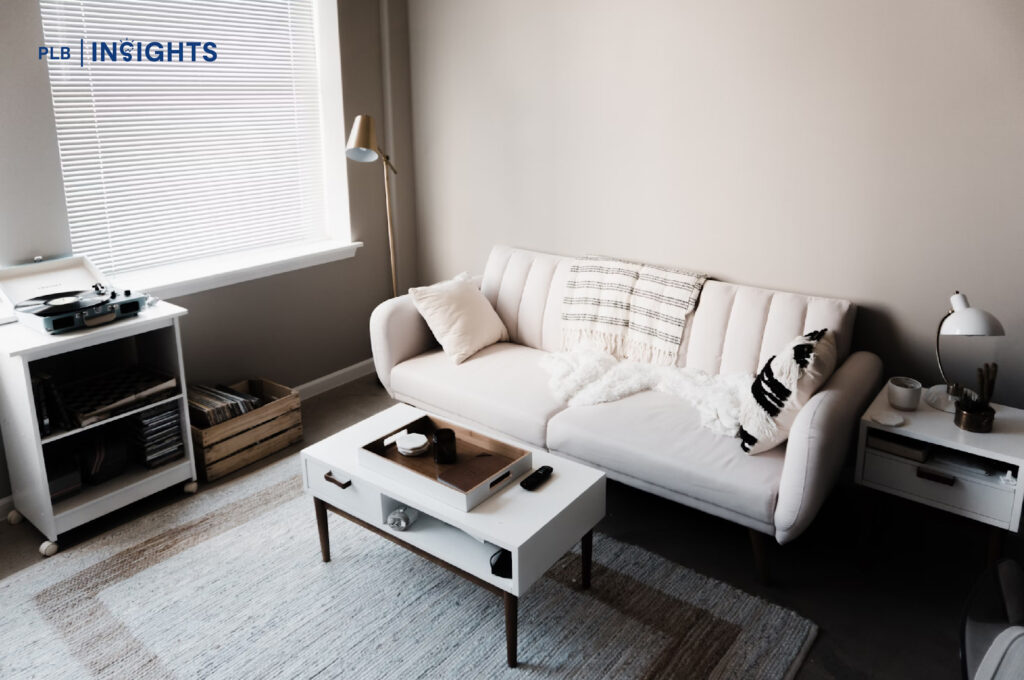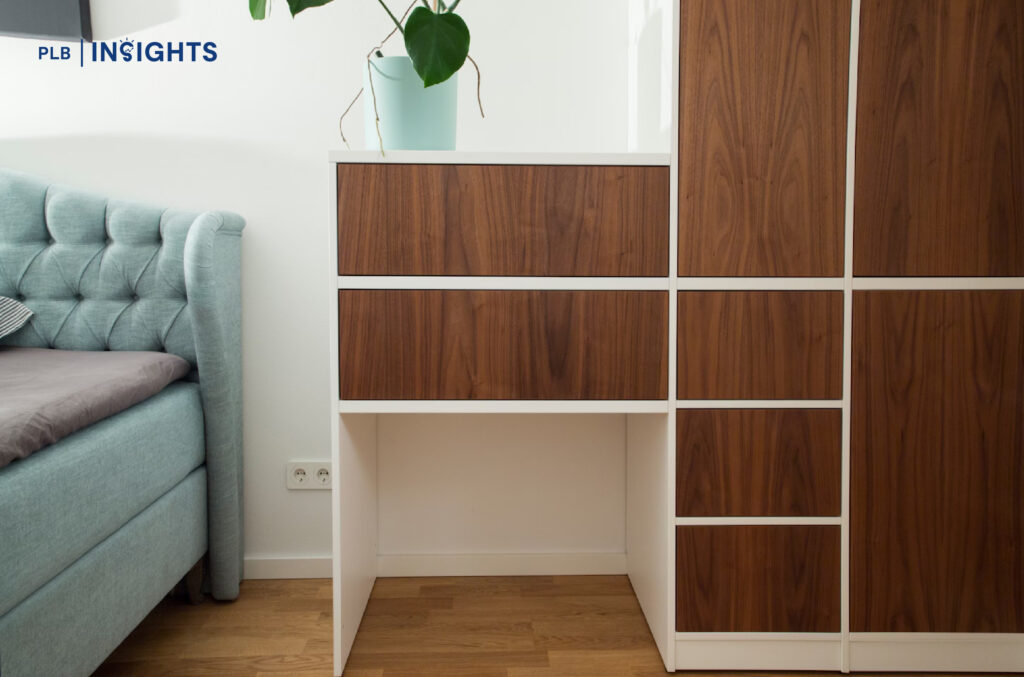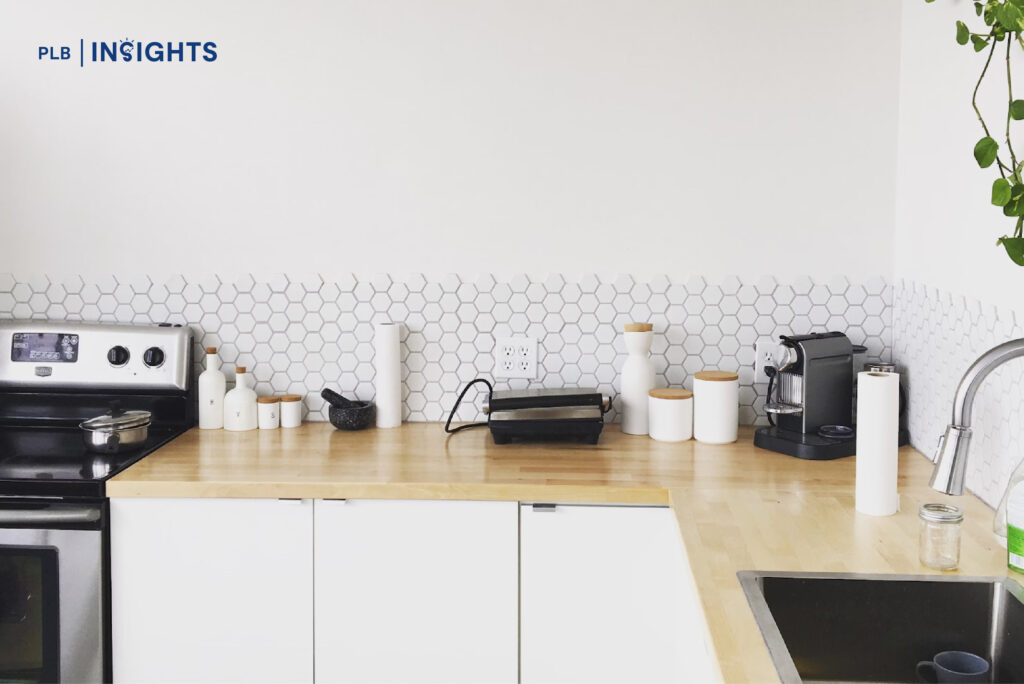
As Singapore continues to evolve into a bustling metropolitan city, space constraints have been and continue to be a challenge for many residents. With increasing demand for efficient use of space, homeowners often face issues with clutter and stress. By decluttering and employing space-maximising strategies, innovative storage solutions and smart designs, you can transform a cramped space into a more inviting and organised home.
In this article, we are going to explore tips and tricks to help you declutter your home and make the most of every square foot.
Understanding Your Space
Before starting any process to declutter and reorganise your living space, it is key to thoroughly understand your space and identify the factors contributing to any space constraints and clutter. You can start by assessing the layout of your home and taking measurements to create a foundation for the decluttering process.

Assessing Your Layout
Assess the layout of your home by taking the time to walk through the various rooms and common areas. This will help you identify how you utilise the space in the different areas of your living space. While doing so, take note of the traffic flow – observe how all of the residents of your living space move through the space, and where most personal items, furniture and decor are placed. Take note of whether walking pathways and entrances have any furniture or personal items blocking them, and ensure that these items are moved for easier navigation throughout the flat.
Determining areas that serve specific functions like dining, working, and lounging and are used by all of the residents can further prevent clutter that may be caused by an overlap. This can especially be the case if there are any personal items or any heavy furniture that is harder to move or that takes up a large amount of space in the living area.
Additionally, identifying underutilised areas can create opportunities for extra storage or dedicated spaces for relaxation or work. For instance, you could find an extra corner in your living space and create a reading nook, a space for getting in a few hours of productive work, or you could add a shelf for extra storage space in a common area of your home.
Measuring Your Space
Another important factor to consider when you start the decluttering process is the measurements of your space. Measuring the dimensions of each of the rooms and common areas of your living space can guide your furniture and decor choices. Moreover, you should also measure existing furniture to determine what fits your space the best – larger furniture may make a smaller room appear more cluttered, whereas smaller pieces may not fit in larger spaces, making them look out of place and messy.
Making Smart Furniture Choices
The second tip for decluttering your living environment and optimising space is making smart furniture choices by prioritising multifunctionality, quality, and scale.

Scaling Proportions
Expanding on our point from the first tip, choosing furniture and decor that is the right size for your living space is essential. Opting for furniture that fits the scale of your rooms will ensure that your living space does not appear to be more cramped. Choosing appropriately sized pieces over larger and more bulky pieces can help you create a space that is more open, airy and easy to navigate. For smaller apartments, low-profile sofas and chairs can make common areas appear to be more spacious and inviting.
Multipurpose and Multifunctional Furniture
When space is limited and shared amongst several residents, investing in multipurpose or multifunctional furniture can be a game-changer in reducing clutter and creating additional storage space. Sofa beds are a good option that provide a comfortable seating arrangement during the day, and a sleeping space at night for guests. Other multipurpose furniture pieces include extendable dining tables that can be expanded for gatherings and remain compact for everyday use, and storage ottomans that function as footrests, extra seating or step stools.
Making Quality A Priority
While this may not directly contribute to decreasing clutter, it is good to prioritise quality when choosing furniture for your shared living space. High-quality pieces can withstand the wear and tear that comes with daily use, especially when you are sharing your space with family members, better than cheaper alternatives.
Getting Creative With Storage Solutions
Employing creative storage strategies like using vertical space, maximising space with hidden storage, and scheduling in regular sessions for decluttering can ensure you create and maintain a well-organised home.
Vertical Space
Vertical spaces are a great way to maximise space. Using furniture like wall-mounted shelves and hanging racks can keep items organised without taking up any floor space. Hooks can also be used for miscellaneous items like bags, jackets, and kitchen utensils, helping to reduce clutter and keep personal items easily accessible.
Hidden Storage Solutions
Another creative storage solution is to use hidden storage that keeps your space tidy. You can use under-bed storage pieces like bins and drawers that fit under your bed to store items such as any off-season clothing you have, shoes, and extra towels and linens. Having tables and chairs that have hidden compartments that open for storage are also ideal for storing any extra miscellaneous items without taking up too much space.
Regular Decluttering of Space
Aside from finding storage solutions, maintaining an organised and clutter-free space will also require regular and ongoing effort. Establishing a set of rules for yourself along with a schedule to clean out your space will ensure that your home does not accumulate clutter over time. This could be done seasonally or twice a year, allowing you to assess what items you need and what you can either sell, donate, or discard. Adopting a minimalist approach or a “One In, One Out” rule when decluttering are practices that can help you control clutter and manage your space better.
Personal Colour and Design Choices
In addition to using tips that help you maximise space, choosing the right colours and design elements for your home significantly influence how spacious your home looks and feels.
Light Colours, Mirrors, and Natural Light
Opt for light and neutral colours for your furniture and walls. Lighter and more neutral shades can make rooms appear larger and more open. Moreover, incorporating mirrors strategically can create the illusion of more space as they enhance natural light present in your living space and make it appear brighter.
Home Design Theme
To add to the natural and cohesive flow in your apartment after you have decluttered, it is key to stick to a theme. You can do this by sticking to a consistent colour palette across rooms. Because you may want to add personal touches to each of the bedrooms in your home, you can have a consistent theme throughout the common areas of your home. Furthermore, you can choose home decor that aligns with the overall theme – whether that is minimalist, contemporary or modern. The cohesion and consistency throughout the common areas of your home will enhance the aesthetic appeal and make the space feel intentional.
Making The Most of Space in Each Room
Each room and common area of your home can be decorated and tailored to maximise space and enhance functionality through different room-specific tips.
Kitchen and Living Room

Installing shelves, pot racks, and magnetic strips that hold your utensils, pots and pans can create a more organised setting in your kitchen. This will ensure you don’t have them on the countertops, where you need space to prepare and cook your meals. Additionally, limit keeping small appliances on countertops when they are not in use. Instead, these can be stored in cupboards either above or below kitchen counters.
As the living room is the heart of a home, it is essential to not only maximise your space and functionality, but also enhance the aesthetic appeal of this common area. You can start by arranging furniture in either a U-shaped or L-shaped layout to foster interaction and keep pathways clear for walking. This also creates space for a table in the middle of the sitting area. Along with this, choosing a few statement decor pieces for the table can reflect your overall design theme without adding too much clutter.
Moreover, using smaller area rugs can help separate space in the common areas of your home visually, especially for flats with an open kitchen concept that is directly connected to the living room.
Bedroom and Bathroom
Space in your bedroom can be maximised through the use of organisers, drawer dividers and small storage boxes in your closet. Using a bed frame that comes with built-in storage can also allow for less clutter in the bedroom. In order to keep your bedroom open, airy and spacious, you can also use bedside tables and dressers that are more compact and come with drawers.
If your bathroom is a shared one, making the most out of the under-sink storage and minimalistic decor can ensure that the room stays as clean and clutter free as possible without affecting accessibility.
Communicating Effectively
Prioritising effective communication throughout and after the process of decluttering your home is crucial. By doing so, you will be able to create a supportive atmosphere with clear guidelines, regular check-ins, and collaborative efforts in maintaining an organised living space free of clutter.
When decluttering a home with family members, it’s important to discuss everyone’s vision for the living space and consider all ideas to ensure that everyone feels comfortable and respected. Setting boundaries and agreeing on personal spaces will help maintain privacy and prevent conflicts. Establishing a cleaning schedule with clear responsibilities can ensure that everyone contributes to keeping the home clutter-free. Additionally, using a family group chat to coordinate routines, share ideas, and discuss plans can help communicate needs and guidelines effectively.
Closing Thoughts
Living in a beautifully curated space can allow for comfort, style and optimal space. By applying tips such as assessing your layout and choosing the right furniture, to fine tuning your design and decor choices, you can maximise all of the space in your home and create a clutter-free living environment. Moreover, maintaining effective communication about any concerns and considerations for your living space throughout the process can further enhance your living environment and foster a harmonious home.
Get in Touch With Us
Are you on a search for the ideal living space? Reach out to us here to explore your options in Singapore’s property market. Our team of seasoned consultants are more than happy to assist you on your property journey.
See you on the next one!







